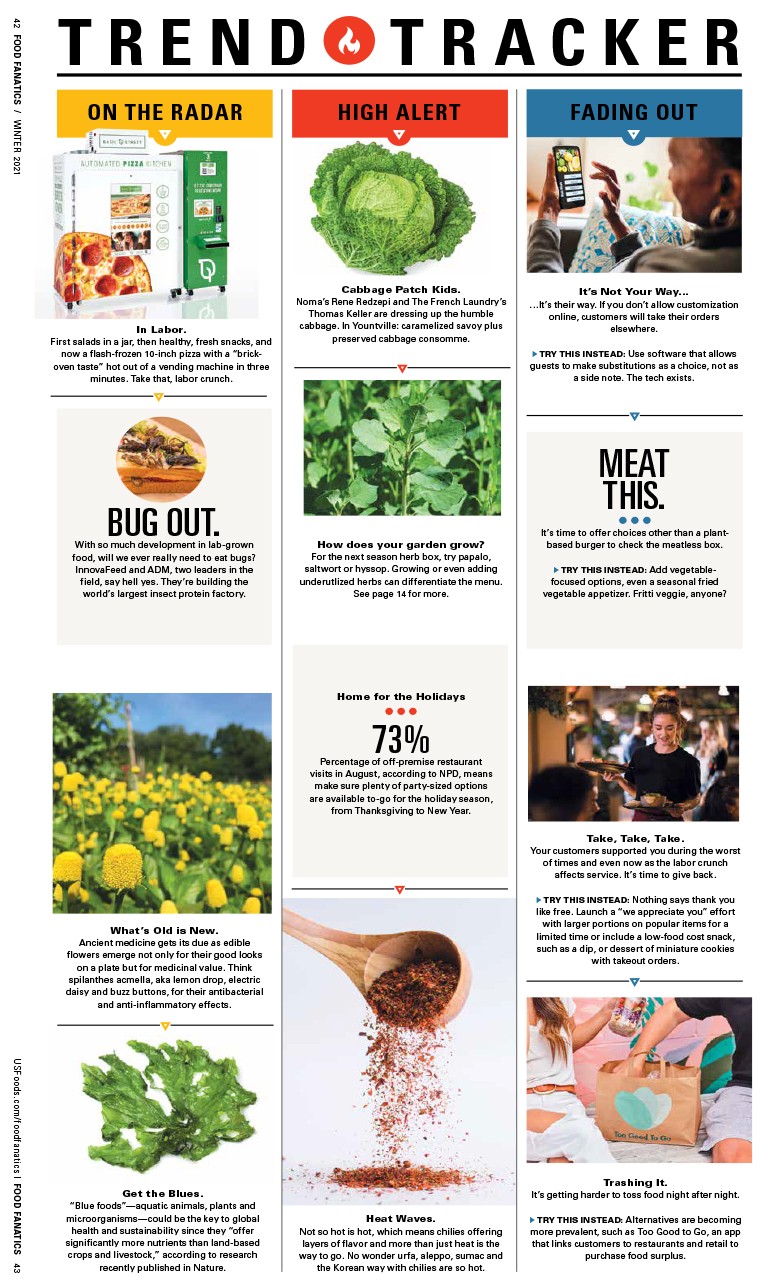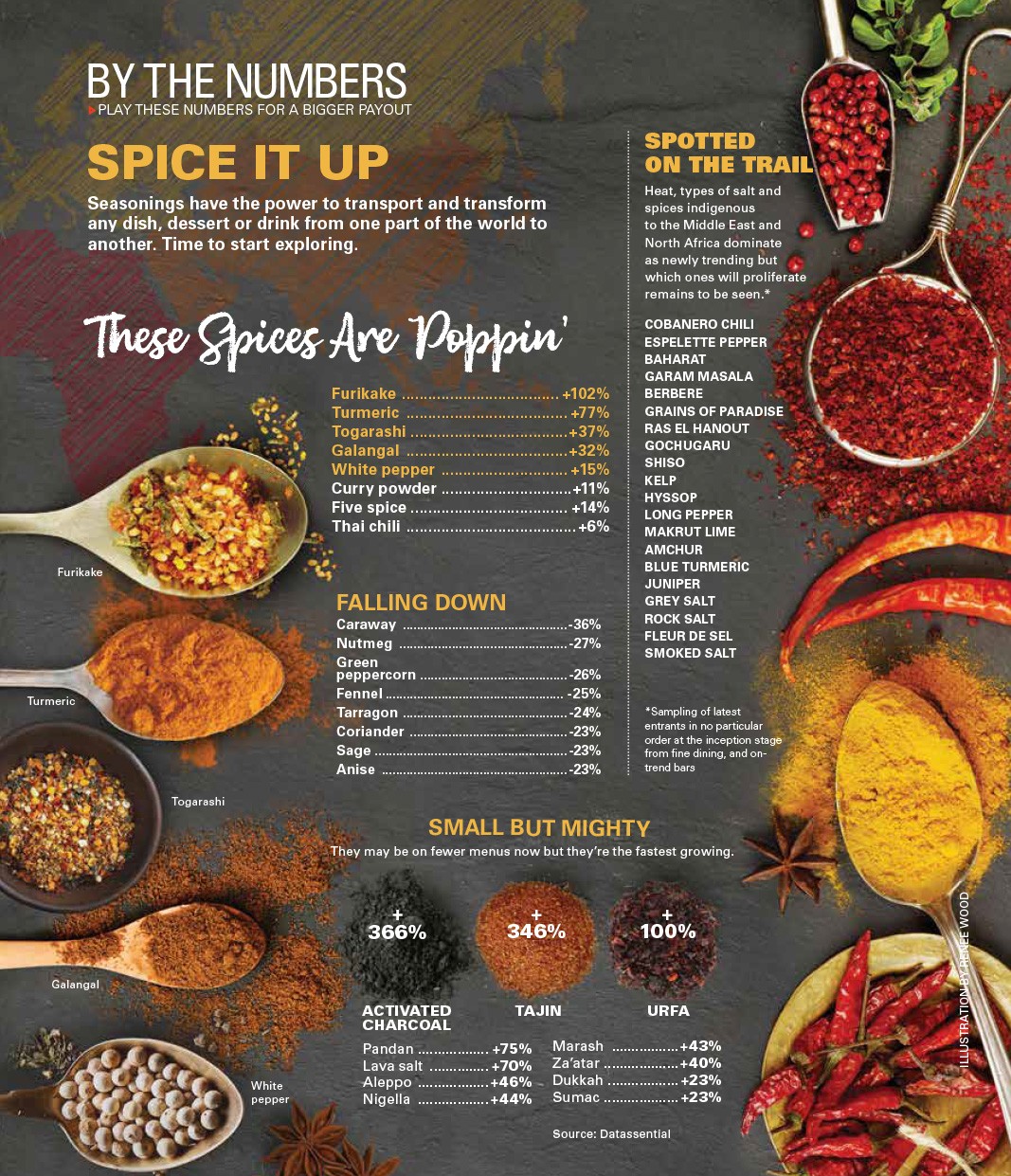HOW TO COMMUNICATE YOUR RESTAURANT CORE VALUES
Plug With A Purpose
At Spice Kitchen + Bar in Cleveland, owner Ben Bebenroth’s social and environmental values are on visual display as customers walk from the parking lot into the restaurant.
The 40-seat patio is lined with open-air shelving, holding pots of Thai basil, wild marjoram and borage; flats of pea shoots and microgreens; young apple trees and beds of strawberries.

Spice is among the next generation of restaurants that believe in transparency by putting ecologically sustainable and moral practices at the center of their business model. They practice “hyperlocalism,” buy non-GMO products, believe in the ethical treatment of farm animals and hire restaurant staff that subscribe to their values. It’s an approach that particularly appeals to millennials and Generation Z, who make purchasing decisions and become brand loyal to businesses with similar do-gooder core values.
Conveying such principles, however, can be tricky.
Too heavy of a message can be a turnoff for customers. “Some people come here for the politics,” Bebenroth says. “Some just come for the polenta fries.”
Furthermore, some restaurants blithely adopt terms such as “sustainability” for a gloss of environmental concern without actually employing many eco-friendly practices.
If you’re the real deal, how can you show your authentic self to customers who are interested in knowing?
PLUG WITH A PURPOSEHOW TO COMMUNICATE YOUR RESTAURANT CORE VALUES
USE YOUR WEBSITE TO PROMOTE CORE VALUES AND CULTURE
Check out the “Philosophy” drop-down link on Honey Butter Fried Chicken’s site, and you’ll find the source for ingredients, how the food is prepared and served, and who’s cooking it. “So when you eat our chicken, our sides and desserts, we hope you’ll spend some time thinking about the ideas behind every bite,” the Chicago restaurant says.

Website visitors learn that the chicken is humanely raised, antibiotic-free and comes from an Amish farm in Indiana. The staff has health insurance and fair wages. Packaging from straws to chicken boxes is compostable and biodegradable. The single largest capital investment is a closed-loop fryer that recovers used frying oil that is later converted into biodiesel fuel.
On its website, fast casual Chipotle pledges it will shun GMO ingredients and uses vegetables “grown in healthy soil” and pork from pigs “allowed to freely root and roam.”
“The key to being transparent is making sure our customers can get the exact information they want, whether that is information about what is in the food, its nutritional value or the stories behind some of our suppliers,” spokeswoman Quinn Kelsey says, “Our website and app contain it all.”
BACK UP RESTAURANT VALUES CLAIMS WITH DETAILS
Common Roots Café buys as much product as possible from local farms. And it provides the details.

The Minneapolis restaurant publishes a pie chart every month that shows the portion of local (sourced within 250 miles of the café), organic, fair trade, sustainable seafood and conventional ingredients, while an interactive map identifies its vendors.
“I’d like to see more accountability in the market,” owner Danny Schwartzman says. “One of the things that frustrates me is ‘green washing’ and ‘local washing,’ intentional or not.”
COMMUNICATE RESTAURANT VALUES IN-HOUSE
Spice puts a map of its companion farm, Spice Acres, on the back of its menu. It reinforces the restaurant’s message to the diner – and staff. A diagram shows the plots for asparagus and raspberries, the location of fig trees, mushroom beds, laying hens and beehives, all of which are 21 miles from the front door of the restaurant. The motto “from our farm to your plate” accompanies the map.
Honey Butter stresses good pay – $13 an hour for servers – health insurance, paid parental leave and profit-sharing for its employees. So it tells customers, via a sign at the ordering counter, “No need to Tip! Hospitality is included. We are committed to being a great place to work. Every order includes great service and delicious food.”
COMMUNICATE RESTAURANT CORE VALUES TO EMPLOYEES
Honey Butter seeks employees who identify with the restaurant’s wholesome food agenda, then encourages employees to relay its narrative.
“The majority of customers come to the restaurant because they want to eat fried chicken with honey butter on it,” co-founder and owner Christine Cikowski says. “But we try to use it as an opportunity to educate our customers about why we’re running the business the way we are, and why they should also support us for that, and not just because we have delicious food.”
At Spice, immersing staff in the trenches helps reinforce the message. New hires commit to a half-day at Spice Acres. They’re paid and treated to lunch for their time.
“The server you’re talking to may have weeded that row of radish,” Bebenroth says. “That’s one way we tell our story.”



